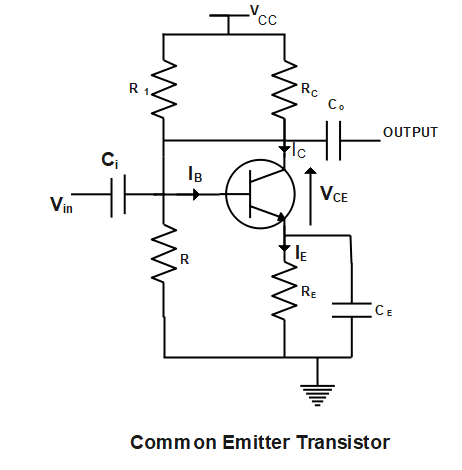
Assertion
A transistor amplifier in common emitter configuration has low input impedance
Reason
The base to emitter region is forward biased
A) If both the assertion and reason are true and reason is a true explanation of the assertion.
B) If both the assertion and reason are true but the reason is true the correct explanation of the assertion.
C) If the assertion is true but the reason is false.
D) If both the assertion and reason are false.
Answer
501.9k+ views
Hint: A transistor which is configured as common emitter, common base and common collector. Emitter is always forward biased with respect to base to supply majority charge carriers to the base. Collector terminal is always reverse biased with respect to the base to remove the charge carriers from the base collector junction.
Complete step-by-step solution:
An amplifier is a device which is used for increasing the amplitude of input signals.in an amplifier there are two input terminals for connecting input and two output terminals for connecting load. In a common emitter configuration, base is one of the input terminals and collector is one of the output terminals.

For proper functioning of a transistor, the emitter-base junction is forward biased and collector-base junction must be reverse –biased.
The input impedance of common emitter configuration with ${{V}_{CE}}$ as constant is given as:
${{Z}_{E}}=\dfrac{\Delta {{V}_{BE}}}{\Delta {{I}_{B}}}$
Where ${{V}_{BE}}$ = Voltage across base and emitter
$\Delta {{I}_{B}}$ = Base current
Base current is of order of few microamperes so the input impedance is very low
So the correct option is A.
Note: In common emitter circuits its current, voltage and power gains are quite high and the ratio of output impedance and input impedance are quite moderate. As it provides high voltage gain and moderate current gain. Common emitter circuits are well suited for voltage amplification for low frequencies.
Complete step-by-step solution:
An amplifier is a device which is used for increasing the amplitude of input signals.in an amplifier there are two input terminals for connecting input and two output terminals for connecting load. In a common emitter configuration, base is one of the input terminals and collector is one of the output terminals.

For proper functioning of a transistor, the emitter-base junction is forward biased and collector-base junction must be reverse –biased.
The input impedance of common emitter configuration with ${{V}_{CE}}$ as constant is given as:
${{Z}_{E}}=\dfrac{\Delta {{V}_{BE}}}{\Delta {{I}_{B}}}$
Where ${{V}_{BE}}$ = Voltage across base and emitter
$\Delta {{I}_{B}}$ = Base current
Base current is of order of few microamperes so the input impedance is very low
So the correct option is A.
Note: In common emitter circuits its current, voltage and power gains are quite high and the ratio of output impedance and input impedance are quite moderate. As it provides high voltage gain and moderate current gain. Common emitter circuits are well suited for voltage amplification for low frequencies.
Recently Updated Pages
A man running at a speed 5 ms is viewed in the side class 12 physics CBSE

The number of solutions in x in 02pi for which sqrt class 12 maths CBSE

State and explain Hardy Weinbergs Principle class 12 biology CBSE

Write any two methods of preparation of phenol Give class 12 chemistry CBSE

Which of the following statements is wrong a Amnion class 12 biology CBSE

Differentiate between action potential and resting class 12 biology CBSE

Trending doubts
What are the major means of transport Explain each class 12 social science CBSE

Which are the Top 10 Largest Countries of the World?

Draw a labelled sketch of the human eye class 12 physics CBSE

How much time does it take to bleed after eating p class 12 biology CBSE

Explain sex determination in humans with line diag class 12 biology CBSE

Explain sex determination in humans with the help of class 12 biology CBSE




